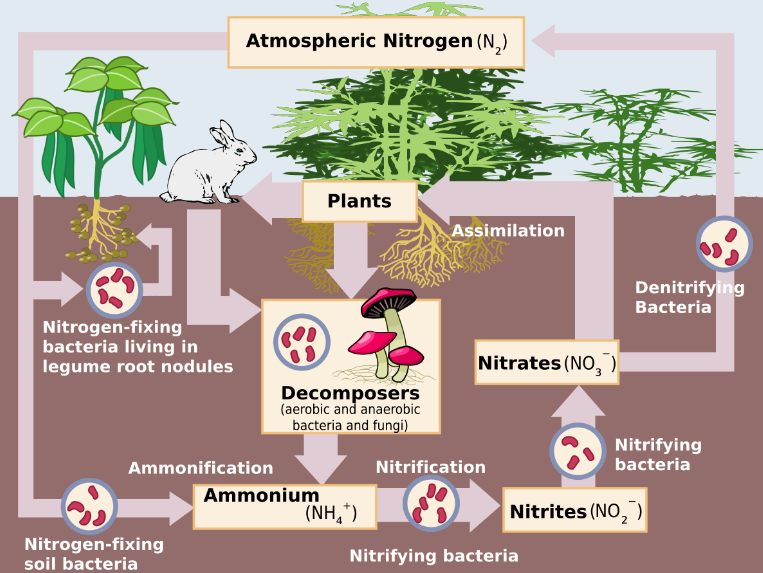Nitrifying bacteria convert?
Nitrifying bacteria are those bacteria that can convert nitrite into nitrate. These bacteria do this process into 2 steps:
- Ammonification
- Nitrification
Nitrifying bacteria are chemoautotrophs that are commonly are Nitrobacter and Nitrospira.
These bacteria contain nitrite oxidase enzyme that can convert the nitrite into nitrate.
NO2 + H2O → NO3 + 2H
Nitrogen is an essential element needed for plants. They produced the nitrate that is easily taken up by plants. The plants use the nitrate for their nitrogen requirement.
Nitrospira:
Nitrospira is gram-negative bacteria that have helical to a vibroid shape. Its size ranges 0.9-2.2µm. It is present as an aggregate in the biofilm. it is a chemolithotrophic bacteria that can fix organic carbon for its requirement. It uses urea for its nutrition and converts urea into ammonia and CO2. The optimal growth temperature is 39ºC and pH ranges from 7.6-8.0.
Nitrobacter:
Nitrobacter is gram negative; rod-shaped bacteria whose size ranges from 0.5-0.9µm. these bacteria show yellow pigmentation due to the presence of cytochrome C. They are chemoautotrophs as they can fix carbon dioxide.
Importance:
These bacteria are ecologically very important. Plants need nitrogen to fulfil their metabolic requirements and they can’t use the free ammonia present in the soil. These bacteria uptake the nitrogen from the soil, oxidize it into nitrite that further oxidizes into nitrate. This nitrate is freely available for plants to take up and utilize it as their nitrogen source. These bacteria help the plant to grow. These bacteria can be used as bio-fertilizer to increase the fertility of plants


Can you be more specific about the content of your article? After reading it, I still have some doubts. Hope you can help me. gratis binance-konto